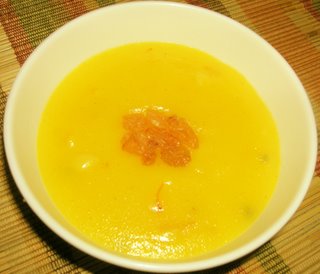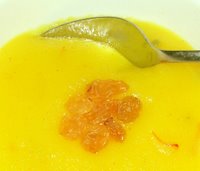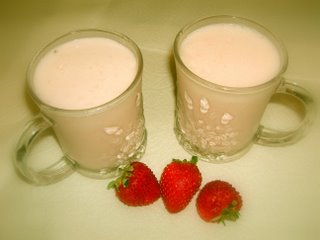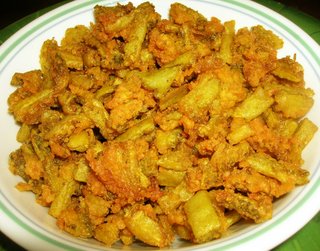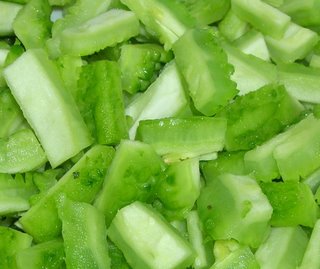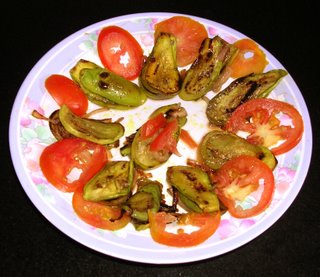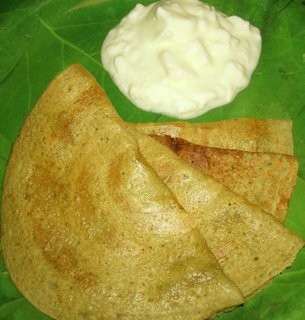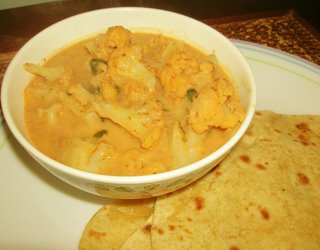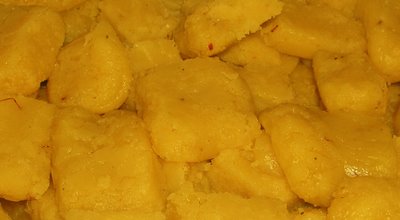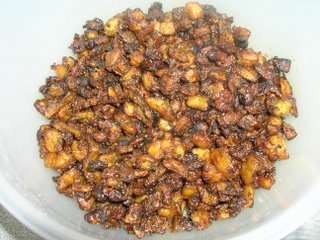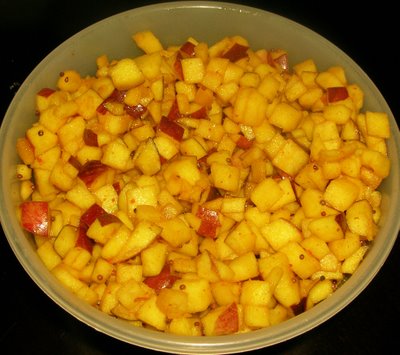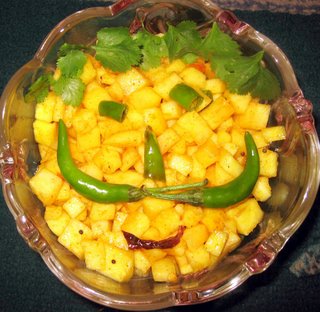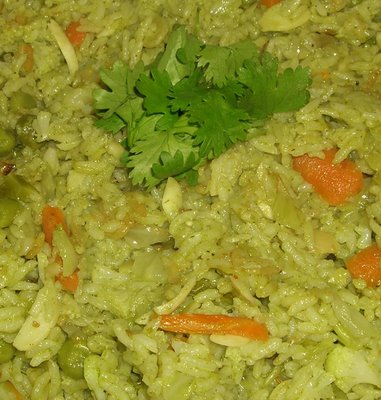Ingredients:
1 cup heaped Bengal gram flour
1 tablespoon gheeCardamom powder, cashew nuts, raisins, diamondkalkand, saffron, kesar color less than 1/2 pinch, cloves
(Fry the cashews, raisins and cloves in little ghee)
Sugar 1 ½ cups and water ½ cups
Oil for deep-frying
1 spoon rice flour and 1 pinch cooking soda.
You need a boondhi plate or a ladle with small holes (kannu somutu in kannada) or Boondhi ladle
Method:
For Syrup:
Mix sugar and water in a heavy kadai and heat till sugar is dissolved stirring it in between. When it is dissolved allow the syrup to boil till half string consistency is reached. Do not stir at this stage.
(Tip: after sugar is dissolved, it becomes sticky and in 2 minutes it becomes half string consistency)
Remove from fire and mix cardamom powder, cashewnuts, raisins, saffron, kesar color less than 1/2 pinch, and cloves.
For Boondhi:
Meanwhile, as the syrup is getting ready, mix Bengal gramflour, rice flour and cooking soda to a bajji consistency adding very little water.
Take a ladle with small holes (kannu somutu) and check whether the batter falls down as droplets.
Heat oil in a frying pan. Hold the ladle above the oil spread the batter so that the batter drops down as small droplets into the oil.
Stir the boondis until fully cooked. After it is soft and before it is crisp, take away from oil and directly put it in the sugar syrup that you prepared.
Drain the excess oil before mixing it in the syrup. Few droplets might have become crisp, just immerse in syrup, it will become soft.
Keep doing the same till the syrup is full. Stir in diamond kalkand.
Making Laddus:

Keep in medium flame if you think the syrup has cooled down. The boondhi syrup consistency should not be too dry or too damp. If its too dry it means you have added more boondhi, if damp, you have to add more boondhi. Make medium sized balls out of the boondhi mixture and the laddu is ready.
Note: The Laddus in the above shown photo does not contain raisins, cashews and kesar color.
